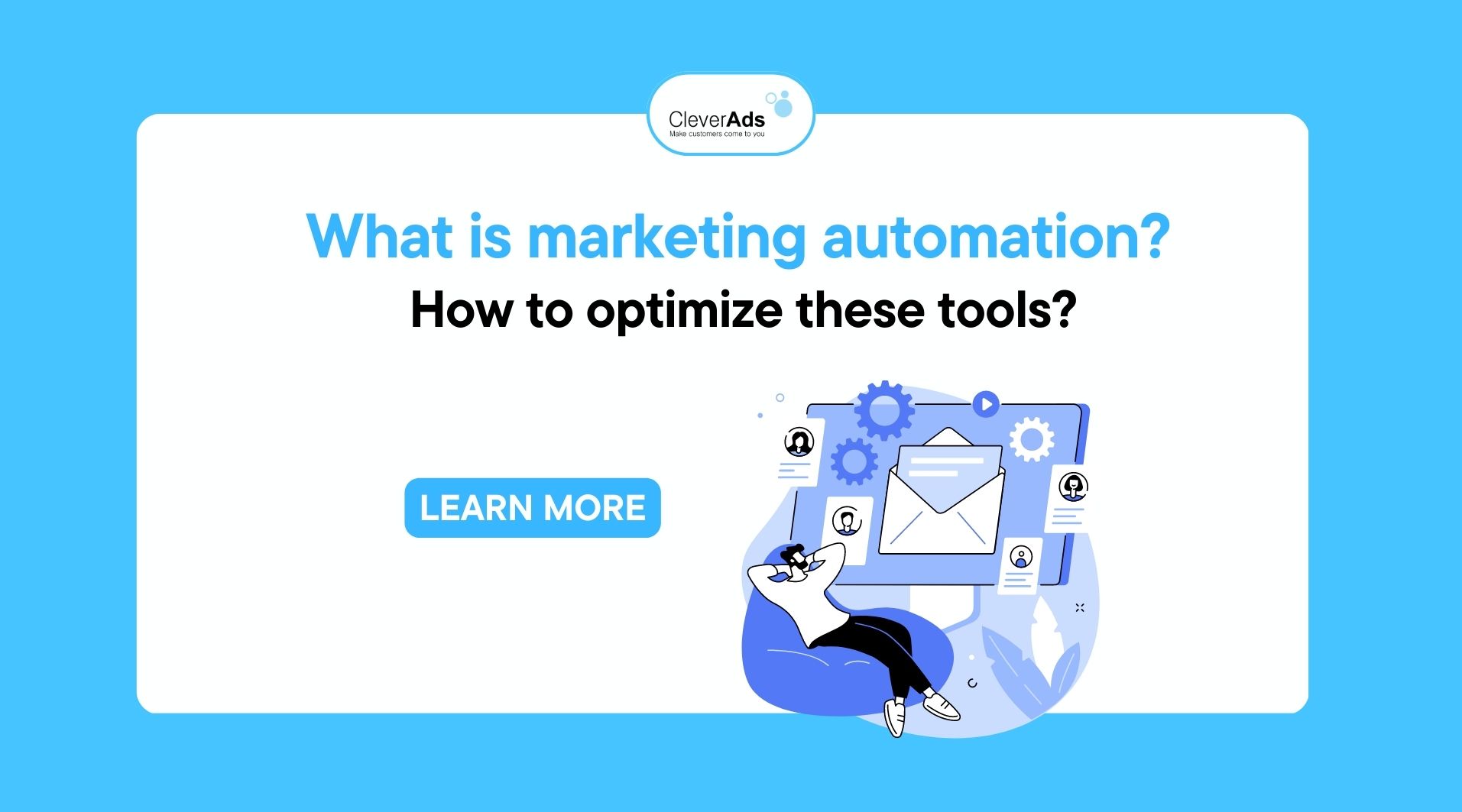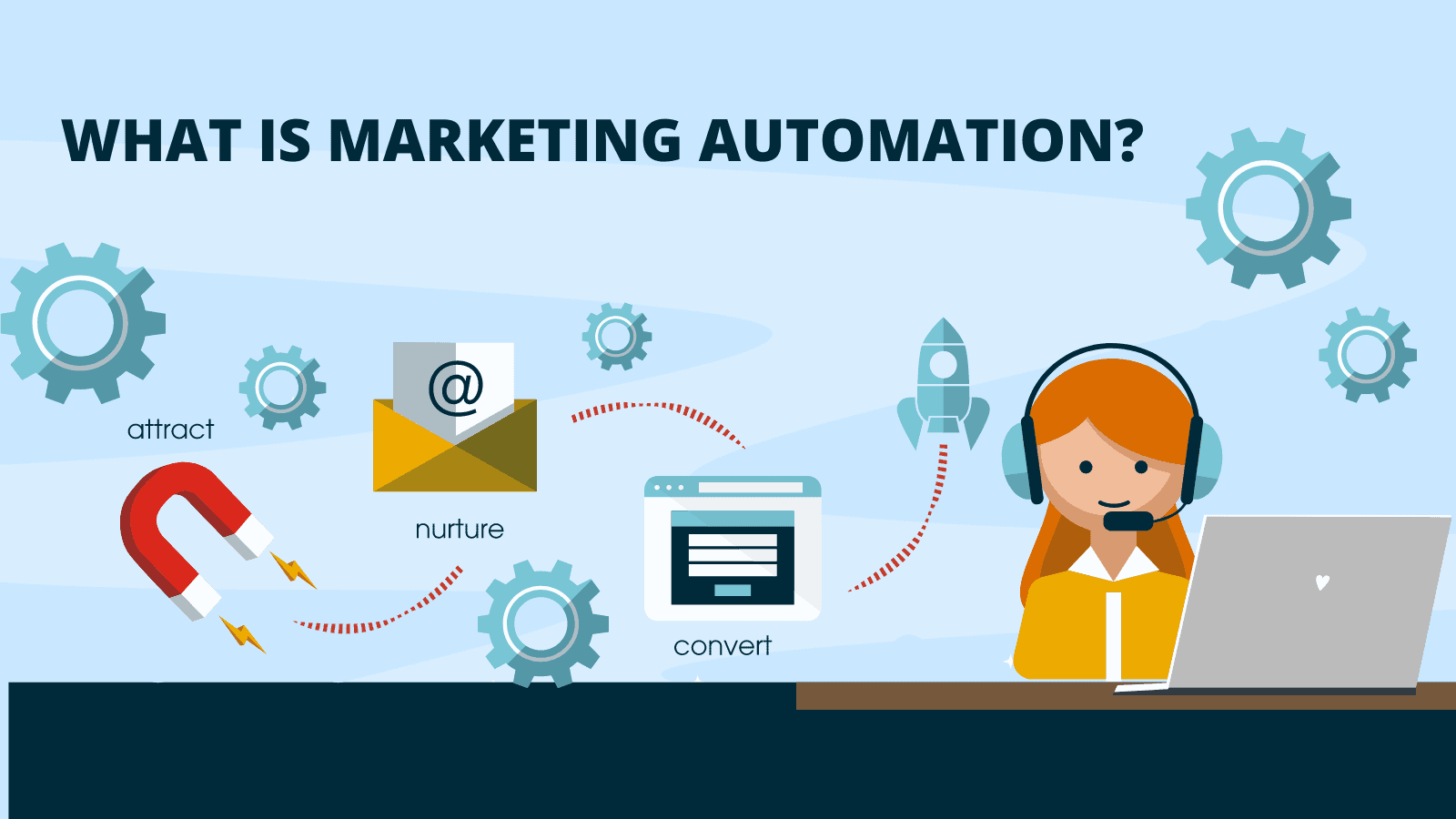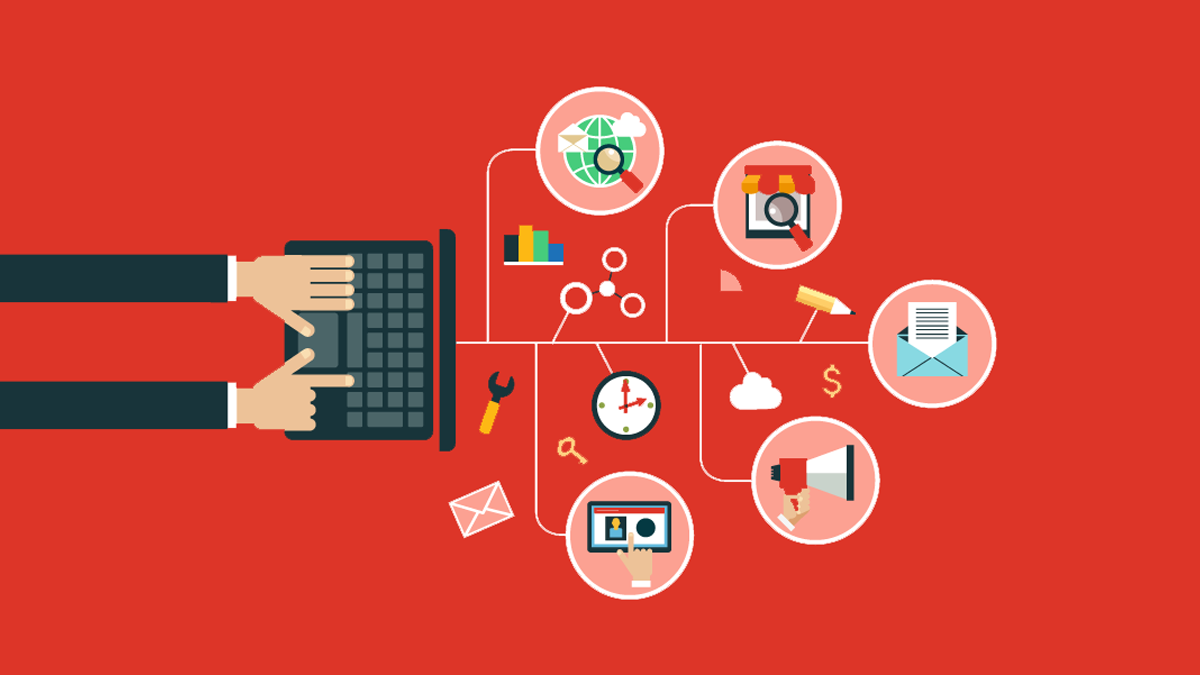What is marketing automation? How to optimize these tools?

Consumers today are increasingly bombarded with media messages from all different media. As a result, it’s more complicated than ever to make a brand’s marketing campaign stand out from many competitors’ campaigns. However, with the development of technology, marketing automation tools have solved this problem.
1. Overview of Marketing Automation
1.1. What is marketing automation?
Marketing automation can be understood as arranging, automating, and measuring marketing tasks and workflows, improving performance, and driving revenue faster.
All businesses want high revenue and faster growth with low costs. However, many companies need help to combine people, processes, and technology to achieve these goals.
Since then, marketing automation has been born to help businesses solve these problems.
This tool is designed to allow businesses to deploy marketing more efficiently across different media and automate repetitive tasks.
Marketing automation brings several benefits to businesses, such as:
- Promote prospecting
- Target market segment
- Relationship Marketing
- Upsell and cross-sell
- Measure return on investment (ROI)
- Account-based marketing

1.2. What is the importance of marketing automation?
According to marketing expert John McTigue, without marketing automation, businesses are just making guesses and hoping that consumers will take the bait and be ready to buy their products.
He also shared that:
“Statistics show that consumers do not. Instead, they want to do their research, learn, and reach out when they need more information or are ready to buy. A well-crafted marketing automation strategy will make that happen.”
In addition, since 2017, marketing automation is also considered one of the fastest-growing technologies today, according to Forrester’s Marketing Automation Technology Forecast.
Initially, marketing automation was only applied to large enterprises, but recently, automation tools have become more popular and can be extended to small and medium businesses.
It’s no surprise that marketing automation has gone from an optional tool to becoming essential for all businesses. The following statistics show this:
Marketing automation technology is expected to show a compound annual growth rate (CAGR) of 14% over the next 5 years.
The highest growth for “marketing automation through communication channels” platforms will reach 25% annually, while that for “revenue automation” platforms will be 19.4%.

2. Benefits of marketing automation
When considering the common challenges that businesses face, it can be seen that generating leads and keeping them throughout the purchase journey remains a top concern. Along with these goals, businesses face an explosion of data collected but need help with using it.
2.1. Attract potential customers
Finding and attracting potential customers is critical in developing businesses in different fields and industries. By automating marketing and sales processes, businesses will have more time to focus on overall strategies and nurture leads.
Marketing automation provides businesses with a detailed picture of lead behavior.
This tool will use behavioral tracking methods, such as tracking the user journey through the website, to help marketers understand potential customers’ preferences and know exactly where they are in the market.
For example, let’s say a particular customer is learning about several different types of products.
This shows that they are starting the buying process, researching information, and making comparisons to select the right products. If they search for information about a particular product, they have narrowed down their options and are ready to contact a salesperson.
Collecting information from touchpoints such as website visits and downloads, social media activity, and direct marketing allows marketing automation tools to score, evaluate, and prioritize campaigns.
2.2. Improve ROI
Besides attracting leads, marketing automation also allows businesses to establish clear, objective measures of the customer lifecycle. For example, whereas in the past, measuring a lead’s readiness could only depend on a marketer’s intuition, now it can be based on predefined results and measured by the company’s automation tool.
With such analytics in mind, marketing automation can help salespeople save more time, measure the effectiveness of contact points with leads, and establish efficiencies in the overall campaign.
Intuitive prediction is also completely removed from the process, especially decisions about when an individual lead moves to a purchase decision. Indeed, specific reporting will allow businesses to accurately calculate the cost per opportunity and ROI of specific marketing efforts.
2.3. Personalized Workflow
Each lead’s action is an additional data point for your marketing strategy, allowing them to know what your customers seek and need. To monitor and collect this information regularly, businesses cannot use conventional manual methods.
So, marketing automation software will allow businesses to use these inputs across many channels to deeply understand customer needs and deliver the right content at the right time.
These processes will help potential customers access the valuable content they are looking for, thereby gradually nurturing them to become customers and make purchasing decisions.
However, marketing automation continues beyond there. With the customer at the center, businesses can continue to engage customers with a personalized workflow to lead and entice them to become loyal customers.
3. Steps to optimize marketing automation tools
As can be seen, marketing automation is a combination of technology, strategy, and customer-centricity.
It allows businesses to nurture leads with highly personalized content that converts leads into customers, makes them happy, and turns them into loyal customers.
To optimize marketing automation, businesses should incorporate automation throughout their operations to break down silos and unify teams with time-saving processes.
Combined with the human touch, marketing automation can help businesses grow even more in the future. Companies need to think about their goals and how they will achieve them to get started. In addition, it is also necessary to determine what processes need marketing automation.
Step 1: Make a plan.
Determining exactly what you are looking for and what you are trying to accomplish will make it easier for businesses to evaluate and choose an automation platform. First, make a list of needs and wants, then see which solution fits the essential criteria best.
At this step, businesses must ensure the link between sales and marketing. The parts need to work closely together to create work efficiency.
Step 2: Execute.
Once you’ve selected the right automation platform, choose the group of resources that will take care of this job and train them thoroughly. These employees need to understand technology applications and answer any questions from customers and in the working process.
The right marketing automation solution will help unify all the people, tools, and processes in your marketing and sales teams, including:
- CRM system
- Scoring potential customers
- Sales Information
- Workflow between departments
After implementing marketing automation tools, businesses must regularly check to ensure the activities are going as intended and for the original purpose.
Step 3: Measure.
Specific reports and analysis will help businesses demonstrate the impact of marketing efforts implemented. First, however, it is vital to ensure that all necessary data has been measured, which includes account engagement and the combined impact of sales and marketing.
Additionally, it’s also essential to understand which key performance indicators (KPIs) are most important to track and which areas of marketing provide the best ROI.
Step 4: Optimize.
Businesses can easily optimise tools by identifying the right KPIs for better results. In addition, controlling KPIs throughout the process will help businesses know which marketing activities are effective and which are stagnant.
For example:
A business determines that event marketing is its goal, and trade shows are one of the best ways to attract potential customers, while webinars are more effective at driving customers.

4. How does marketing automation affect consumers?
Marketing automation benefits businesses and helps their customers solve common problems in the digital era. First, customers are approached with too much information, making them feel confused when they need to find the correct answer. Then, when customers have already made product choices, they often have to go through the fragmentary experience of constantly switching different platforms and channels. Marketing automation can reduce this fragmentation by connecting platforms, collecting data in a usable format, and prioritizing important tasks.
Show more relevant content.
With marketing automation, businesses can define what customers will see when visiting the website. From advertising to email marketing, please take advantage of your target audience and study their behavior to deliver the necessary information. In addition, marketing automation helps businesses cut unnecessary time by using collected data to highlight the most relevant content at the right time.
Provide better answers faster.
Besides, marketing automation also helps businesses prioritize tasks and manage leads so that customer questions will be answered quickly. In addition, with behavioral data stored in CRM, it is easier for employees to solve customer problems without searching for information for too long.
Provide a seamless, multi-channel experience.
No one wants to repeat the same action over and over again. And that’s why marketing automation delivers such a great customer experience. The data collected, stored, and used in marketing software makes it possible for businesses to provide customers with personalized experiences, such as pre-filled forms, and targeted emails that meet their needs, and customer service feels like a physical store. With automation, customers get the same experience no matter how they contact the business.
5. Differentiate between marketing automation and CRM
CRM (customer relationship management) and marketing automation have much in common. However, marketers still need to remember a few points as marketing automation manages the lead nurturing process much earlier in the buying process than CRM.
To be more specific, marketing automation focuses on raw leads, targeting customers in the first steps of the sales and marketing funnel. For example, a potential business customer may have visited a website, clicked a link, or filled out a form on that website. The data at this early stage will be collected to select the right target and automate many subsequent marketing tasks.
Besides, CRM often focuses on sales.
This tool manages customer interactions at the bottom of the sales funnel to facilitate conversions. In addition, it also interacts with existing customers and tracks their engagement.
Taken together, CRM and marketing automation are considered powerful tools, helping to achieve high efficiency and nurture leads, facilitate sales, and maintain brand loyalty.
CONCLUSION
An excellent example of marketing automation is the customer receiving a feedback form after purchasing the product. They can be sent automatically after the sales process has been completed to capture important information from consumers.
In particular, marketing automation manages and expands marketing activities on different channels without spending too many resources. This tool frees up staff for other tasks and minimizes possible human errors when handling large amounts of consumer data.
If you need an optimal solution for Marketing, don’t hesitate to contact us – CleverAds at: cleverads.com.ph.


